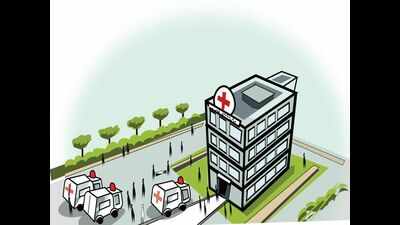- News
- City News
- kochi News
- Number of critical patients in Kerala hospitals on the rise
Trending
This story is from October 22, 2020
Number of critical patients in Kerala hospitals on the rise
As Covid-19 case numbers surge in the state, most of the Covid hospitals -- both government and private -- are now seeing a concomitant increase in patients requiring critical care. There has been an almost 25-30% increase in category C patients, with many reporting only after developing severe complications.

Representative image
KOCHI: As Covid-19 case numbers surge in the state, most of the Covid hospitals -- both government and private -- are now seeing a concomitant increase in patients requiring critical care. There has been an almost 25-30% increase in category C patients, with many reporting only after developing severe complications.
According to Directorate of Health Service (DHS) data, on October 1there were a total of 481 patients in ICUs and 115 needing ventilator support.By October 20, there was a 37% jump in patients needing ICU care, with 768 admitted. Those on ventilator support had also increased to 193. This was despite only a 21% increase in active cases – from 72,339 on October 1to 91,922 on October 20.
The fact that many of the critical patients may not require immediate ICU or ventilator support could offer some respite to health officials and staff.
Many of the asymptomatic persons and patients with mild symptoms in home quarantine or those with ILI or SARI-like symptoms may be ignoring symptoms initially, only to approach hospitals when their situation worsens, say experts. Even an asymptomatic patient may develop complications between the sixth and 10th day.
Incidentally, though the health department monitors a patient in home quarantine over phone, the onus to report changes in vital signs is on the patient and relatives. Each such patient is asked to keep an oximeter and regularly monitor their oxygen levels to prevent silent hypoxia, as well as unhealthy BP levels. However, these advisories are often ignored.
Another problem that has come to light involves CFLTCs or hospitals with high caseloads: an asymptomatic patient is given an antigen test three to four days after admission and is sent home on testing negative. Those who are under the impression that they have recovered can tend to be careless and land up in hospital later with complications. There is a fear that if this trend persists then ICU and ventilator capacity in the state will soon be exhausted.
“But, this is normal in a pandemic when critical patients increase as we move from the initial stage of the infection,” said Dr Sajith Kumar R, head, department of infectious diseases, Kottayam Medical College Hospital.
According to Directorate of Health Service (DHS) data, on October 1there were a total of 481 patients in ICUs and 115 needing ventilator support.By October 20, there was a 37% jump in patients needing ICU care, with 768 admitted. Those on ventilator support had also increased to 193. This was despite only a 21% increase in active cases – from 72,339 on October 1to 91,922 on October 20.
The fact that many of the critical patients may not require immediate ICU or ventilator support could offer some respite to health officials and staff.
Many of the asymptomatic persons and patients with mild symptoms in home quarantine or those with ILI or SARI-like symptoms may be ignoring symptoms initially, only to approach hospitals when their situation worsens, say experts. Even an asymptomatic patient may develop complications between the sixth and 10th day.
“Unlike in the initial phase of the outbreak, the sick are checking into hospitals late. Many in home quarantine, despite having comorbidities, ignore symptoms and reach hospitals after eight to 10 days with severe symptoms of pneumonia. This makes treatment difficult,” said Dr Anoop Kumar, member, state government’s medical advisory panel on Covid management and critical care physician at Baby Memorial Hospital, Kozhikode.
Incidentally, though the health department monitors a patient in home quarantine over phone, the onus to report changes in vital signs is on the patient and relatives. Each such patient is asked to keep an oximeter and regularly monitor their oxygen levels to prevent silent hypoxia, as well as unhealthy BP levels. However, these advisories are often ignored.
Another problem that has come to light involves CFLTCs or hospitals with high caseloads: an asymptomatic patient is given an antigen test three to four days after admission and is sent home on testing negative. Those who are under the impression that they have recovered can tend to be careless and land up in hospital later with complications. There is a fear that if this trend persists then ICU and ventilator capacity in the state will soon be exhausted.
“But, this is normal in a pandemic when critical patients increase as we move from the initial stage of the infection,” said Dr Sajith Kumar R, head, department of infectious diseases, Kottayam Medical College Hospital.
End of Article
FOLLOW US ON SOCIAL MEDIA











